What are the parts of a staircase called?
Handrail, baluster, balustrade, bannister; treads, risers, stringers, newel posts – these are all words you’ve probably heard before. But if you had to define them, what would you say? Would you know what each part of a staircase is, and what it’s for?
Whether you’re commissioning a bespoke handrail for a grand staircase in a luxury home or designing a space-saving solution in a modern office, it’s important to familiarise yourself with the terminology used. In this post, we’ll explore all of the most common parts of a staircase – names, definitions and types – and explain the role each component plays in the overall structure.
Basic components of a staircase
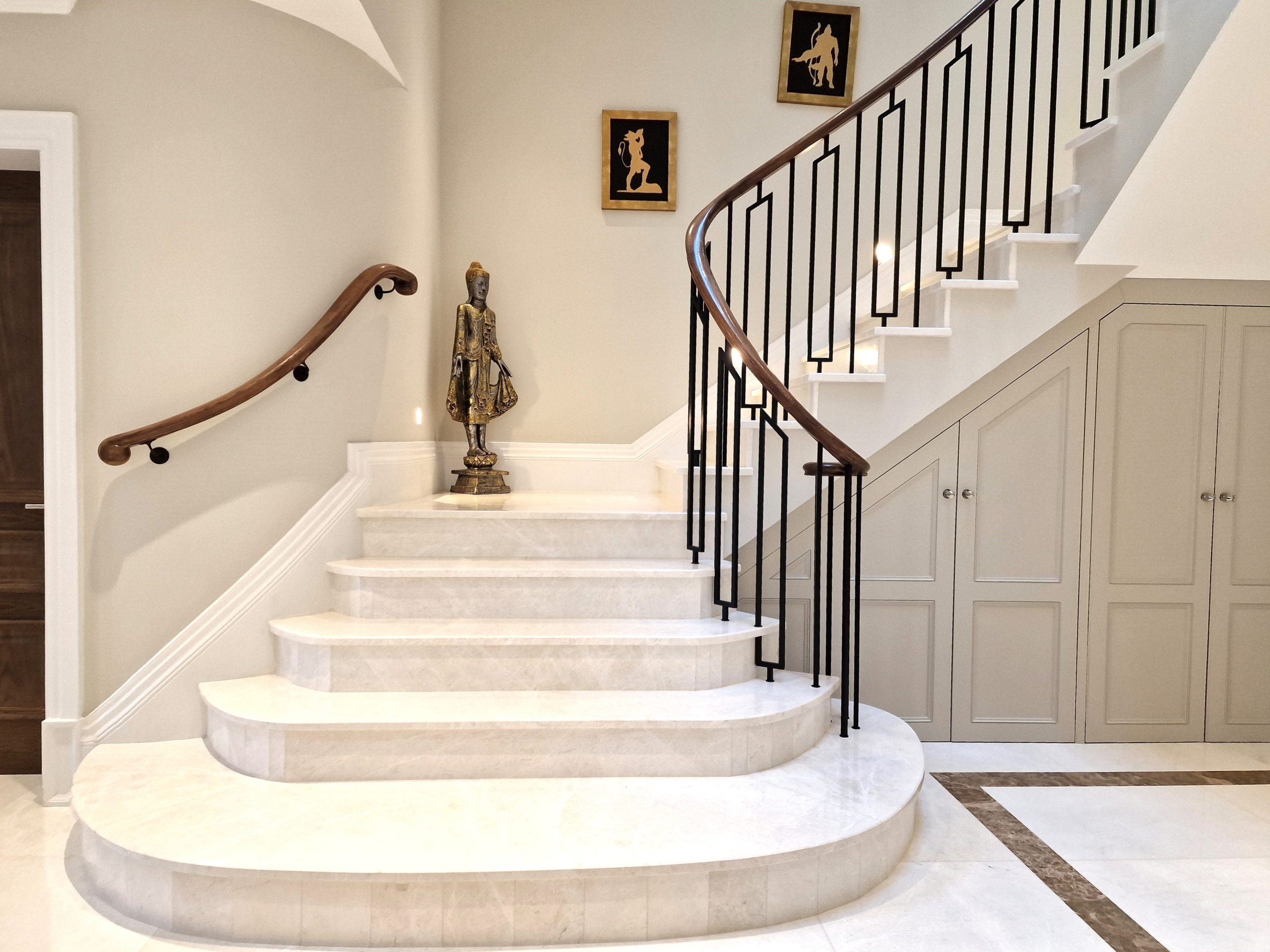
1. Treads
If you were to name parts of a staircase, ‘tread’ may not be the first word that comes to mind – and yet it’s the most visible and most used component in any set of stairs. The tread is the flat, horizontal surface you step on when ascending or descending, and it plays a crucial role in the usability and safety of a staircase.
Treads can vary in width and depth (length), depending on the overall design and how steep each step needs to be. The material chosen for the treads can also vary; this can affect both the aesthetics and durability of the staircase.
2. Risers
The riser is the vertical part of a staircase that connects one tread to the next, forming the front of each step. In traditional stairs, risers give the staircase its height and structure, and also help to enclose the space beneath each tread.
Not all staircases have risers, as some designs leave the space open. To picture a staircase that doesn’t have risers, imagine a modern see-through glass staircase, or an exterior staircase made of corrugated metal, both of which are often made without them.
3. Stringers
Stringers are the sloped boards that run up each side of a staircase, providing structural support for the treads and risers. They are vital when it comes to the staircase’s stability and overall strength.
There are two main types of stringers:
- Closed stringers: These have a solid face, with the treads and risers fitted into routed slots. Closed stringers are the traditional choice for residential staircases; they offer a cleaner, more polished appearance, as they completely conceal the edge of each step.
- Open stringers: These leave the profile of each tread and riser visible from the side, creating a more modern and visually lighter look. Open stringers are common in contemporary and minimalist designs and are often used in commercial settings to create a more open aesthetic.
Stringers can vary depending on the type of balustrade fitted to them. For example, our minimum suggested width for a stringer would be 40mm if using steel spindles without newel posts.
Additional structural elements of a staircase
4. Nosing
Nosing is the front edge of the stair tread that projects slightly beyond the riser. The point of that little lip is that it increases the surface area of the tread, providing more room for the foot to step on and reducing the risk of slipping. It also helps to improve grip and stability, especially when designed with anti-slip features such as textured surfaces.
Whether or not to have nosing can also be a design choice; a pure ninety degree angle of riser and tread looks modern, whereas big, noticeable nosing tends to look rustic and old-fashioned. This is one of the parts of a wooden staircase that you may see in more traditional residences.
5. Landing
A landing is a flat, horizontal platform within a staircase that interrupts the continuous run of treads and risers. Not all staircases will have a landing, but it’s an essential feature in certain designs, particularly in multi-story buildings.
Landings are strategically placed at points where the staircase changes direction, or at intervals within a long flight of stairs. They are often used at the top or bottom to transition into the next section of the staircase or to connect with hallways or corridors.
6. Handrail
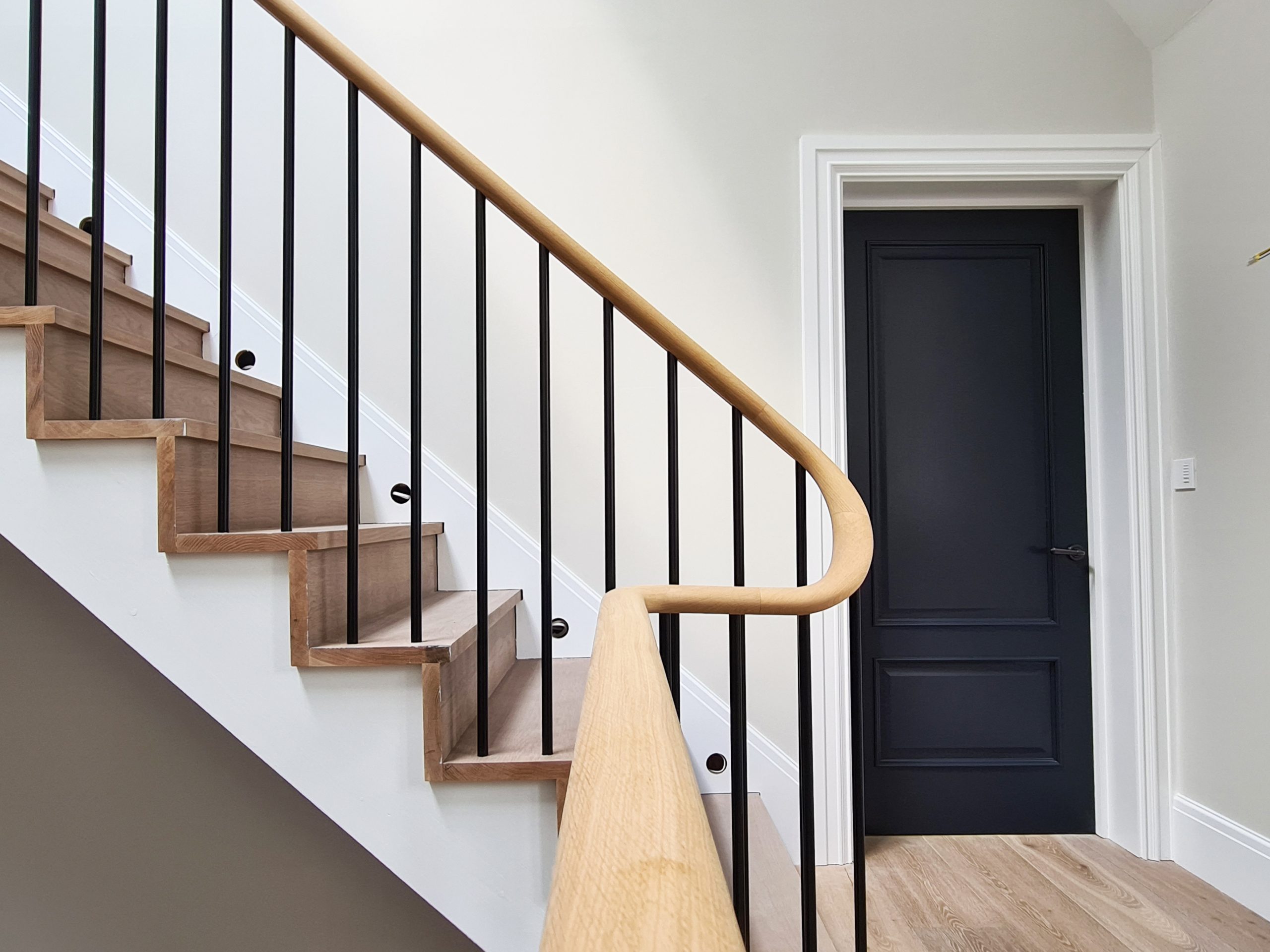
Our favourite part of any staircase, the handrail is the part that you hold onto when you climb the stairs – the wall-mounted or baluster-supported railing that supports you as you ascend or descend. It’s also known as the banister.
Being such a large and visible part of your staircase, the handrail plays a big role in defining its style. You can see it from the stairs, hall and landing, and often at eye-level. And, of course, it’s every staircase’s most important safety feature.
There are as many types of handrail as there are styles of staircase. Take the ‘wreathing handrail’ for example: a wreathing handrail curves in two directions at once (horizontally and vertically), usually to follow the sweep of a curved staircase or connect with a volute or turnout. It’s a custom detail found in more complex stair designs.
7. Balusters
Balusters, also known as spindles, are the vertical posts that connect the handrail to the treads or base rail. They help prevent falls by enclosing the sides of the staircase, and they also contribute to the stability of the handrail.
Balusters are usually evenly spaced, both for safety and appearance. The type of baluster chosen contributes to the aesthetic appeal of the staircase.
8. Balustrade
The term balustrade refers to the complete assembly of the handrail (banister) and balusters (spindles). The balustrade is not just a safety feature; it also plays an essential role in defining the staircase’s character and visual impact. A well-designed balustrade can transform stairs from simple and functional to a stunning architectural centrepiece.
Balustrades are commonly timber, but may be made from a wide variety of materials including steel and wrought iron. Our bespoke balustrades, made with custom handrails and spindles, are designed, manufactured and pre-finished before site installation. This means they don’t need to be welded or assembled once they arrive at the property.
Aesthetic and safety features found in staircases
9. Newel post
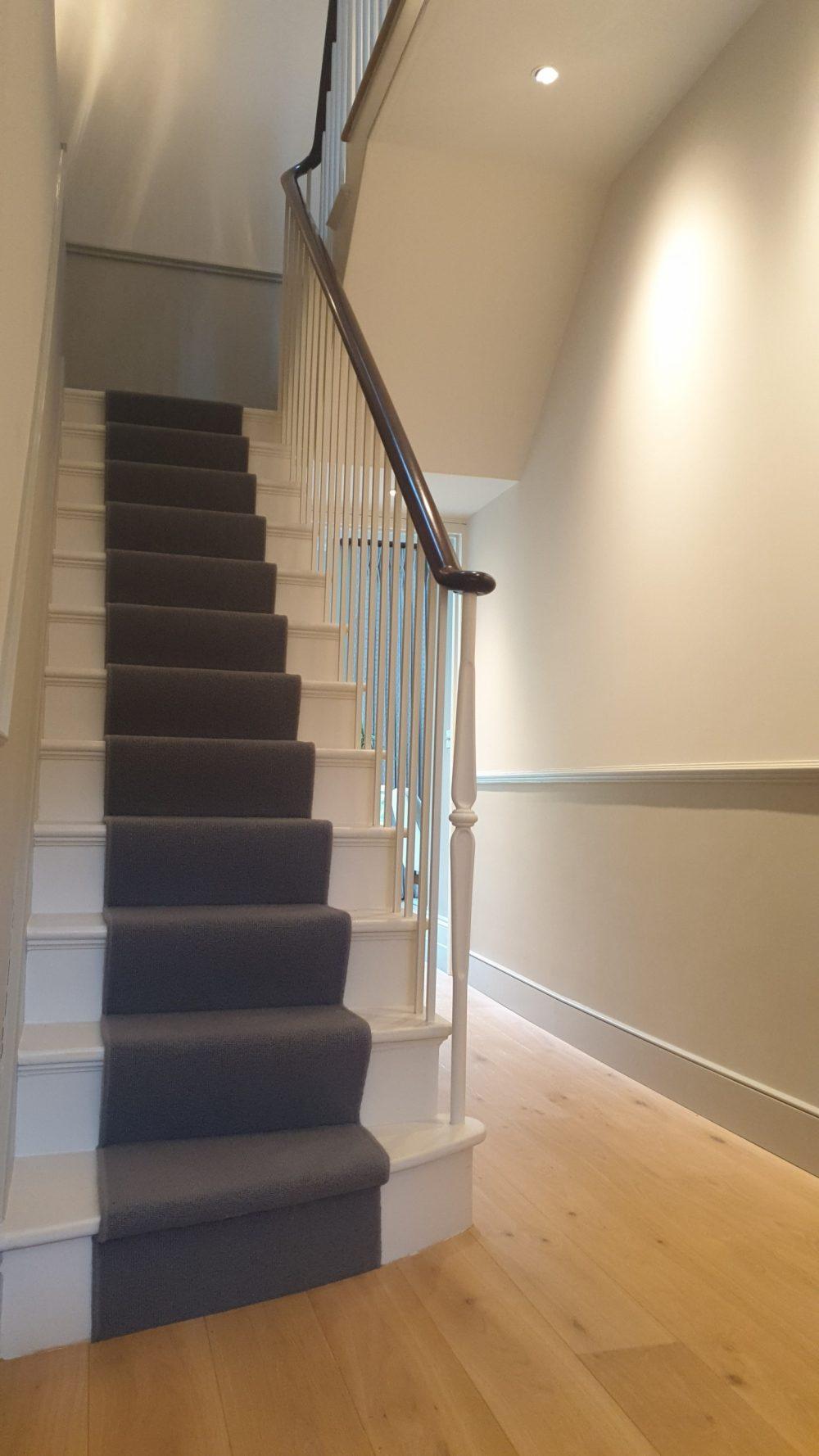
The newel post is a prominent wooden or metal vertical post found at the top or bottom of many staircases, or at the points where the staircase changes direction. They anchor the handrail and provide structural strength.
Newel posts are often more decorative than balusters, especially in traditional designs, and may feature intricate carvings, unique shapes or decorative caps that reflect the architectural style of the home. They can serve as the focal point either at the top or bottom of the stairs.
10. Skirting
Skirting, also known as baseboard, is the moulding or trim that runs along the wall at the base of the staircase. It creates a clean, polished transition between the staircase and the wall, and covers the joint where the wall meets the stairs, concealing any gaps or imperfections. Skirting can also be customised to match the style of the staircase and the room’s decor, such as custom curved skirting for a curved staircase.
11. Built-in lighting
Built-in lighting is a critical feature in staircase design, enhancing both safety and ambiance. Properly illuminated stairs reduce the risk of accidents and contribute to the overall atmosphere of the space.
Safety is the primary concern when it comes to stair lighting. Well-lit stairs help prevent trips and falls, especially in low-light conditions or at night. Built-in lighting ensures that each step is clearly visible, reducing the likelihood of missteps.
Beyond safety, built-in lighting can create a welcoming ambiance. It adds warmth and depth to the staircase, making it not only functional, but also a visually appealing feature of the home or building.
Further specialised stair parts to consider
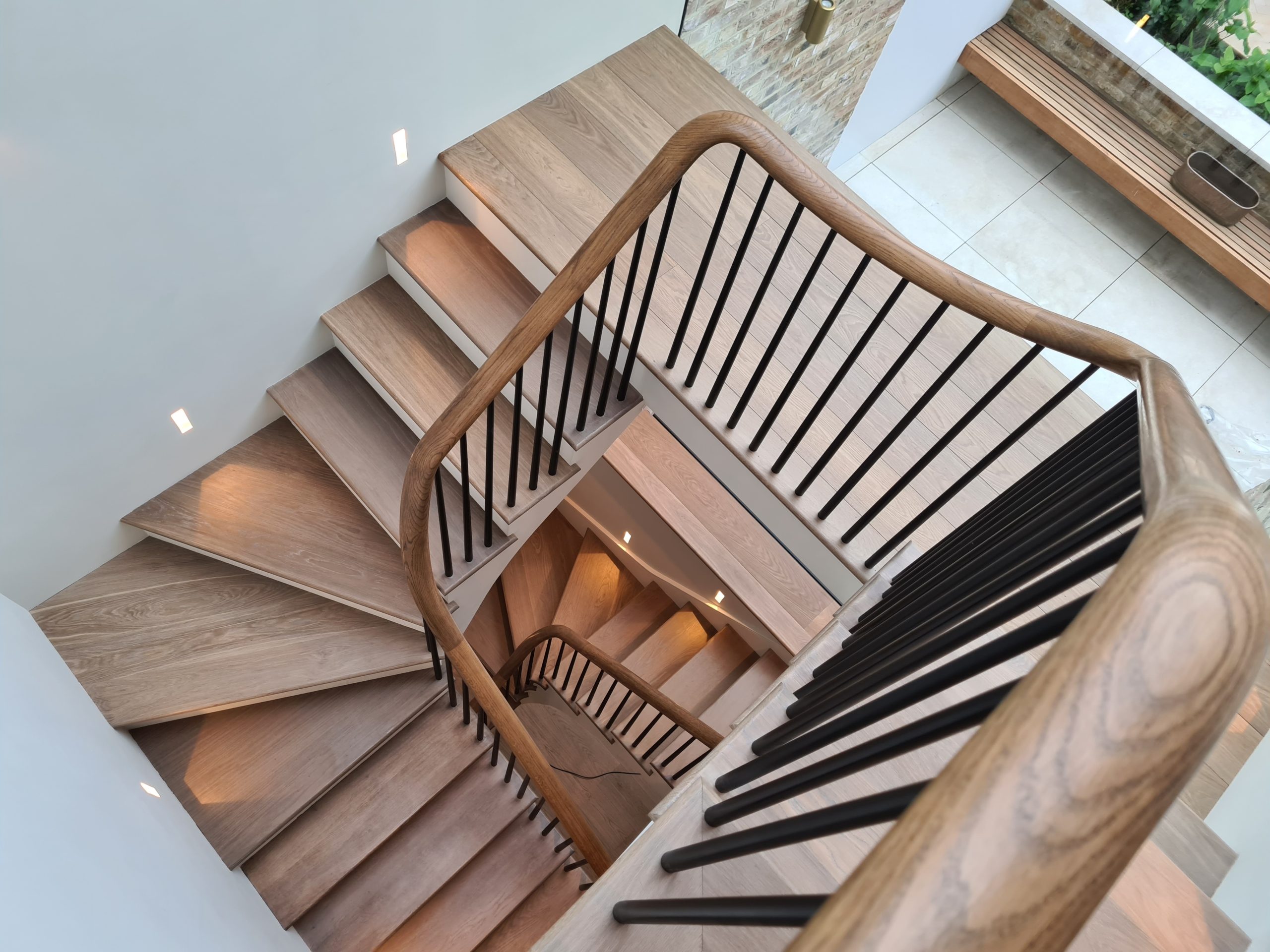
12. Winder
Winders are a type of stair tread that are triangular or pie-shaped, used in place of a landing to allow a staircase to change direction, typically in a spiral or curved staircase. They allow the staircase to turn a corner without needing additional square footage, so are ideal for small residential properties or tight spaces.
13. Bullnose step
The bullnose step is a type of stair tread that has a rounded, protruding edge, and is commonly used as the first step in a staircase or where the tread extends beyond the stringer.
The bullnose step is often used in high-traffic areas because of its durability and stylish appearance. The rounded edge provides a smooth, finished look that can soften the transition between the tread and riser.
14. Volute
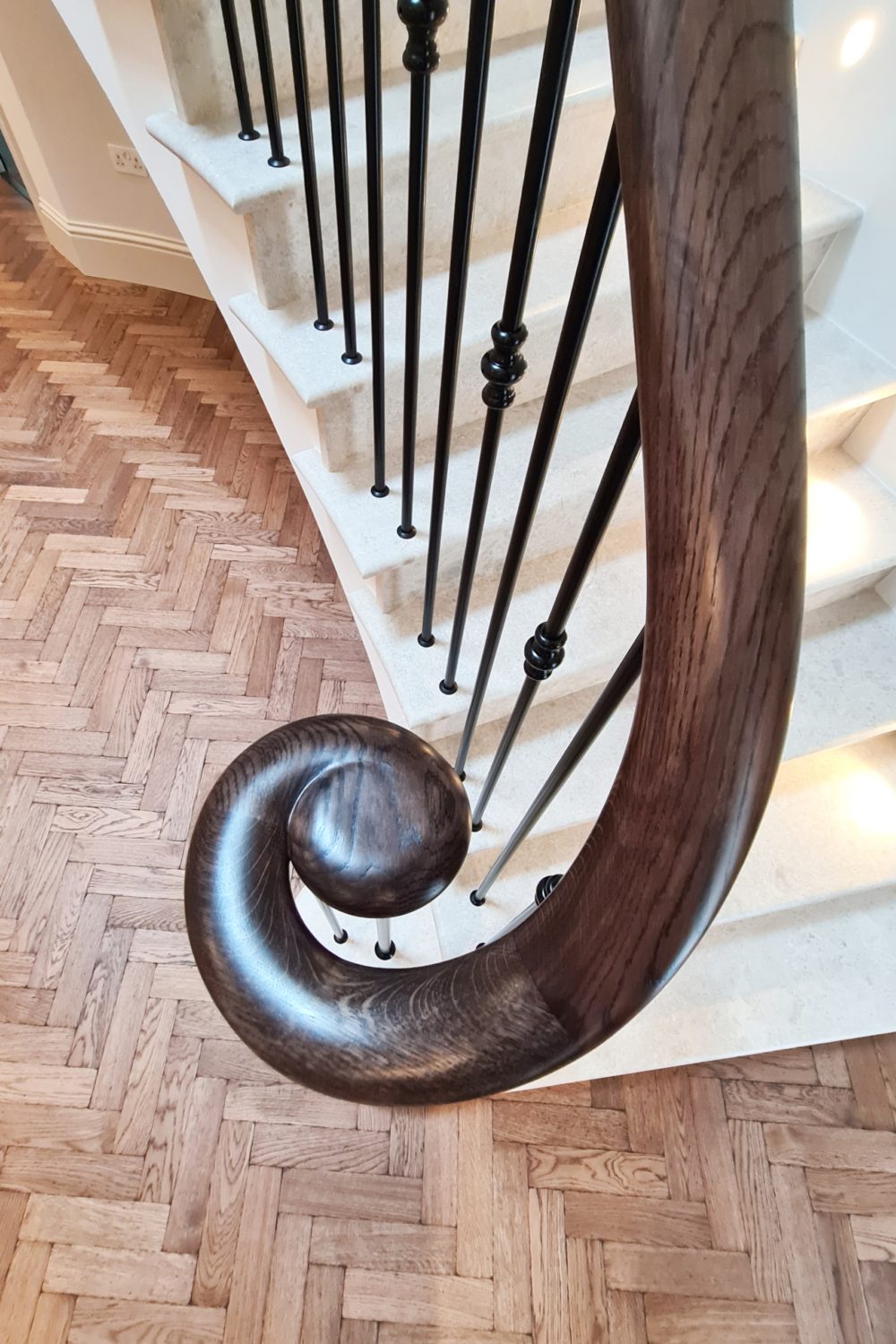
A volute is a decorative spiral or scroll-shaped element, sometimes known as a ‘monkey tail’, that is often found at the end of a handrail in a staircase, particularly in high-end or traditional designs. The volute adds a sense of continuity and flow to the staircase, as the spiral shape naturally guides the eye upward along the handrail.
15. Turnout
A turnout is a decorative extension of the handrail that curves outward at the end, creating an elegant flare – also found in high-end and traditional staircase designs.
The turnout adds an element of refinement to the staircase, softening the transition between the handrail and the post. It makes the staircase appear more inviting and can give the space a more traditional or classical look.
16. Wreathing handrail
A wreathing handrail is made with complex handrail components, which allow it to turn in two different directions at the same time whilst it moves along the staircase.
This bespoke type of handrail is often found on curved staircases, enhancing the graceful curves and sweeping aesthetic of their design. You may also choose to install a wreathing handrail at the top and bottom of any other staircase design, to smoothly transition the end of the handrail’s continuous journey – in lieu of a sharp stop or newel post.
Common staircase styles
Straight staircase
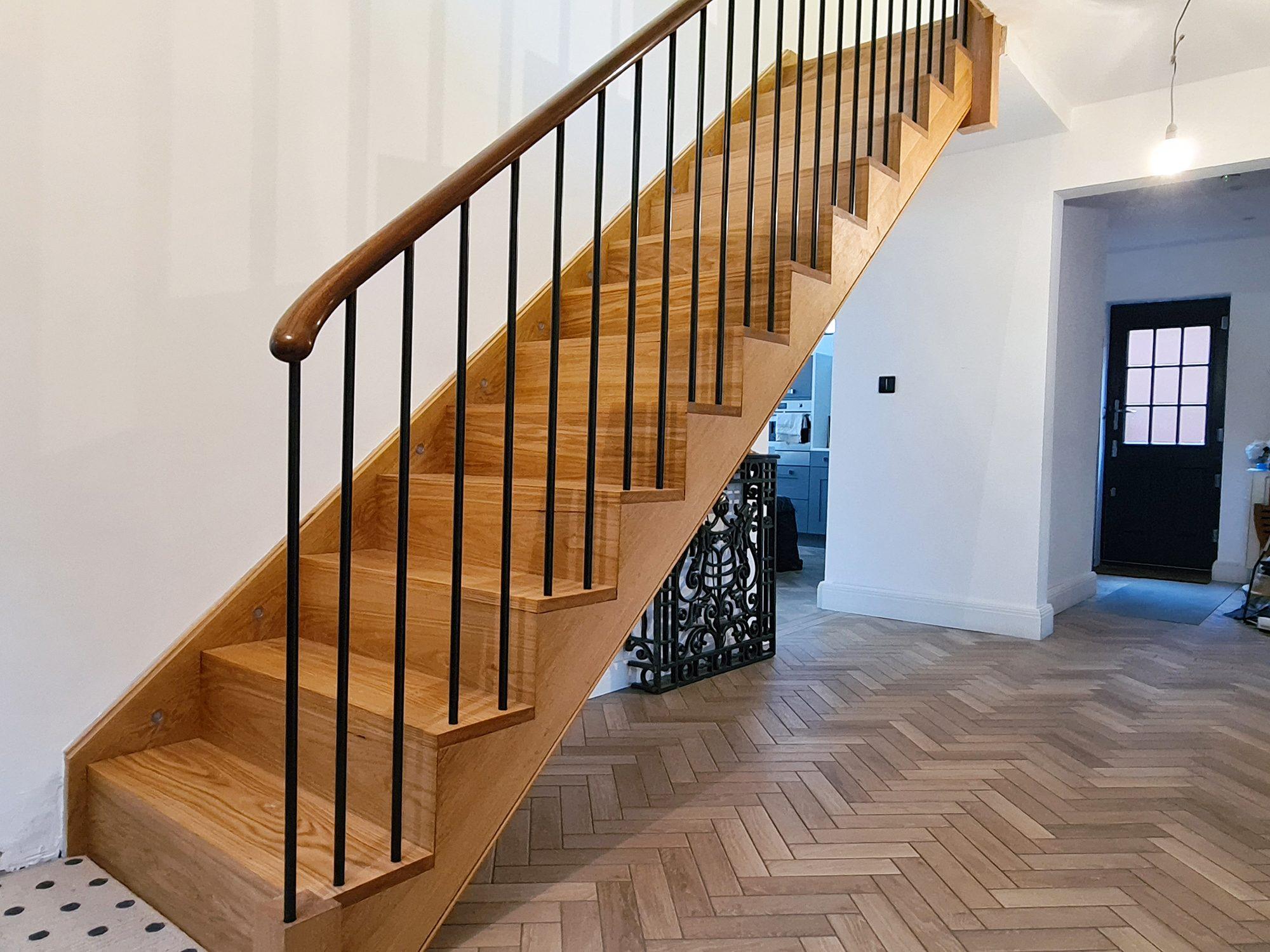
Straight staircases are the most basic and common type of staircase, characterised by a single, linear flight of stairs without any turns or changes in direction.
The straightforward design of a straight staircase makes it easy to use and understand. Its linear form is highly functional, allowing for direct and unobstructed movement between two floors.
Straight staircases are relatively simple to design and build, which can reduce construction time and costs. They require fewer materials and less labour, compared to more complex staircase designs, making them a practical choice for both residential and commercial projects.
L-shaped staircase
L-shaped staircases, also known as quarter-turn stairs, have a design that changes direction, typically at a 90-degree angle, forming an “L” shape.
L-shaped staircases are excellent for optimising space, particularly in homes or buildings with limited floor area. The 90-degree turn allows the staircase to fit into corners, making efficient use of available space without extending too far into a room.
The change in direction adds an element of visual interest to the staircase, making it more dynamic and engaging than a straight staircase. This design can also create opportunities for additional architectural features, such as landings or open spaces beneath the stairs, enhancing the overall aesthetic of the interior.
U-shaped staircase
U-shaped staircases, also known as half-turn stairs, consist of two parallel flights of stairs connected by a landing, forming a “U” shape.
U-shaped staircases are well-suited to larger spaces, where their expansive design can make a bold architectural statement. The landing between the two flights provides a natural break, which can make the staircase easier to navigate – especially in taller buildings.
The landing in a U-shaped staircase serves as a resting point, which can be particularly beneficial in buildings with multiple floors. This design also allows for better separation between different areas of a home or commercial space, as the landing can create distinct zones or transitions within the layout.
Spiral staircase
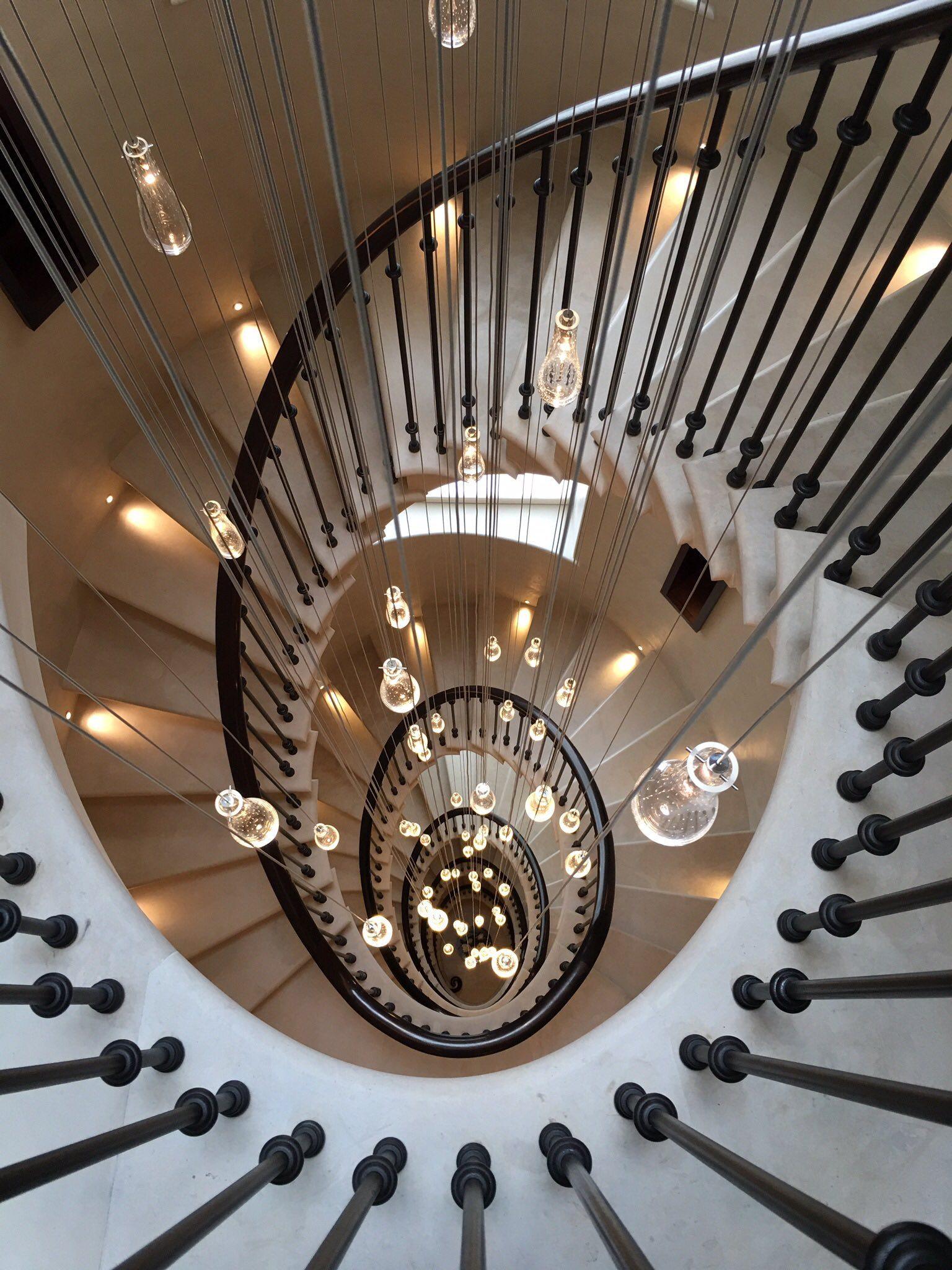
Spiral staircases feature a helical design, where the treads wrap around a central post – creating a compact, circular staircase that spirals upward.
Spiral staircases are renowned for their space-saving design. They occupy a much smaller footprint compared to other types of staircases, making them ideal for tight spaces or areas where a traditional staircase would not fit.
Due to their compact nature, spiral staircases are often used in small homes, lofts, or areas with limited floor space, such as attics or mezzanines. They are also popular in outdoor applications, like accessing rooftop terraces or garden spaces.
Curved staircase
Curved staircases are designed with a graceful, sweeping arc, rather than sharp angles, creating an elegant, flowing transition between floors.
Curved staircases are often seen as a statement piece in grand homes or commercial buildings. Their smooth, continuous curve adds a sense of fluidity and sophistication to the space – making them an ideal choice for creating a dramatic entrance or focal point.
Curved staircases are typically used in luxury residences, hotels, or other high-end commercial projects where aesthetics are a priority. Their custom design can be tailored to match the architectural style of the building, often featuring elaborate railings, high-end materials, and intricate detailing to enhance their visual impact.
When it comes to bespoke handrails and balustrades, we’re the experts. Contact us today for industry-leading advice or to book a consultation, or explore more information on our blog.



Trackbacks & Pingbacks
[…] handrails and other staircase parts need to be manufactured to exact specifications to fit tight tolerances, CNC machining (and […]
[…] of any staircase, providing safety, structural integrity and aesthetic value. But with so many terms used for different staircase parts – including balustrade, banister, handrail, baluster, newel post, bottom railing, and more – […]
[…] if your carpets were previously disguising more extensive damage. You will need to replace any staircase parts that are rotting or in very poor condition, as no amount of refurbishment will make these parts […]
[…] aesthetics, offering a wide versatility in design. From wood and metal to glass and acrylic, these staircase components can be customised to match your home’s styles and aesthetics, along with your own personal […]
[…] To learn more about staircase terminology, explore our article on what the parts of a staircase are called. […]
Leave a Reply
Want to join the discussion?Feel free to contribute!